If you're self-isolating or social distancing this weekend (you should be!) due to the ongoing Covid-19 pandemic, it may be tempting to order in a takeaway.
But won’t that undo all the hard work you’ve been doing on the indoor trainer? Not if you choose your dishes wisely, says healthy food expert Karen Reid.
With a little care you can still enjoy a little self-indulgence without too much self-sacrifice.
The key is to:
- Choose lean meats such as chicken or chargrilled fish
- Choose steamed or boiled rice or noodles rather than fried
- Choose tomato-based or dry curry dishes such as jalfrezi, tandoori or bhuna, rather then creamier dishes such as korma
- Share fries, rice or naan instead of having a portion to yourself
And to avoid:
- Fatty meats, such as lamb or duck
- Battered dishes
- Extra cheese, or stuffed crust pizzas
There are also many items that you can substitute in order to make your take-out meal healthier:
- Instead of mayonnaise-based dips and sauces, opt for yoghurt dips (such as raita) or tomato sauce
- Instead of cheese-stuffed crusts or deep pan bases on your pizza, go for a thin crust version
- Opt for a side salad instead of garlic bread or dough balls
Here are a few guidelines on what to pick and what to avoid when indulging in some of the UK's most popular takeaways.
Chinese
Chinese meals tend to contain a lot of vegetables and, if you avoid the deep-fried items the dishes, don’t usually have too much fat.
Choose items with lean meat such as chicken or a vegetarian alternative such as tofu – this will up the protein content, which is essential for muscle recovery.
“Check the descriptions of how items are cooked on the menu, as it will usually say if they involve frying,” says Reid, “and choose aromatic steamed rice or plain boiled rice instead of a fried rice, as the grains absorb a lot of fat.”
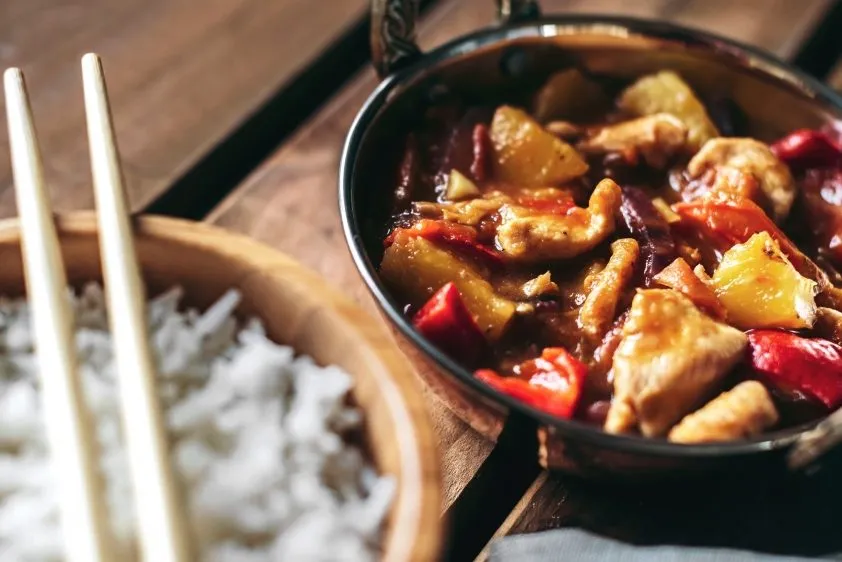
Reid also suggests using chopsticks if you aren’t used to eating with them. “This can slow your rate of consumption which gives your brain a chance to react when your stomach is full, preventing overeating,” she says.
Good choice: 350g sweet & sour chicken (582kcal, 33g carb, 30g fat, 57g protein), 150g portion boiled rice (200kcal, 40g carb, 1.5g fat, 4.5g protein)
Bad choice: 350g kung pao chicken (850kcal, 25g carb, 56g fat, 51g protein), 150g portion egg fried rice (279kcal, 49g carb, 10g fat, 6.6g protein)
Curry
When choosing an Indian takeaway, avoid dishes that are oil-based or contain a lot of coconut cream, such as korma or tikka masala. “A lot of Indian food is cooked in oil or ghee to fuse the spices together and improve the taste. When dishing up, try to leave the layer of oil behind in the carton,” says Reid.
Avoid fried breads such as paratha and puri, and be careful of the fat in pilau rice. “Opting for boiled rice instead of pilau will save you around 150kcal and 12g fat per portion,” Reid advises.
Instead, stick to tomato-based dishes, and plain rice or naan to cut down the fat but still keep up carbohydrate and protein levels to stay in prime riding condition.
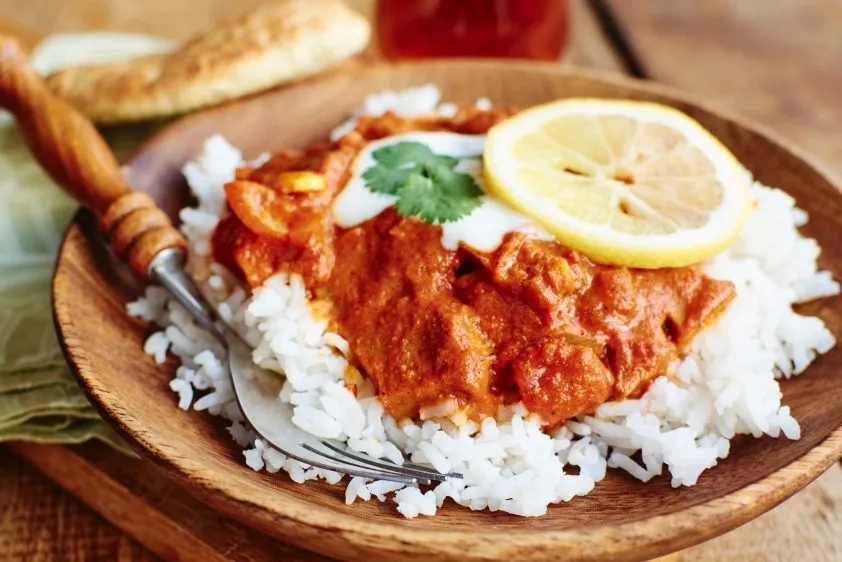
Good choice: 350g prawn jalfrezi (400kcal, 21g carbohydrate, 21g fat, 40g protein), 150g boiled rice (200kcal, 40g carbohydrate, 1g fat, 4.5g protein)
Bad choice: 350g chicken korma (800kcal, 15g carb, 35g fat, 40g protein), 150g pilau rice (350kcal, 40g carbohydrate, 13g fat, 5g protein)
Fish and chips
“Food from the fish and chip shop is almost all covered in batter and deep fried. So the only way to really save yourself from the bad stuff is to remove some – or all – of the batter before eating,” suggests Reid, although some chip shops do offer fish steamed these days, instead of fried.
She also recommends thick-cut chips because they contain more potato and less fat than the thin crispy types. Having mushy peas or beans as a side instead of chips will save almost 30g fat.
Your choice of fish is also important. Reid says: “Choosing salmon instead of plaice or cod is much better for you, as salmon is an oily fish that’s high in omega 3 fatty acids, which help reduce your risk of heart disease, and is believed to increase blood flow to the muscles and lower post-workout inflammation.”
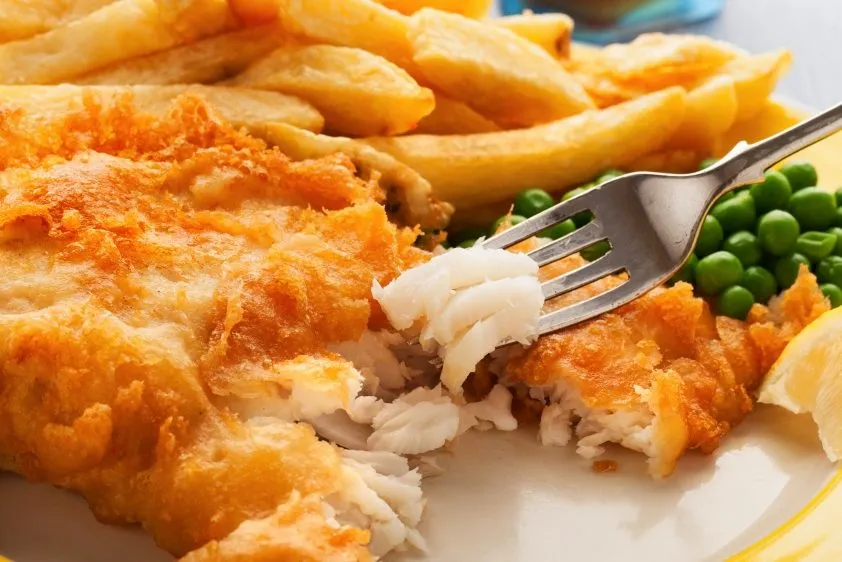
Good choice: 170g salmon (295kcal, 10.3g carbohydrate, 11.8g fat, 14.7g protein), 100g mushy peas (86kcal, 14.3g carb, 0.5g fat, 6.2g protein)
Bad choice: 200g fried plaice in batter (514kcal, 24g carb, 18g fat, 15g protein), 240g chips (574kcal, 73g carbohydrate, 30g fat, 8g protein)
Pizza
“Pizza has a very high carbohydrate content, so if you're carb-loading before an event it can be included in your diet – in moderation of course,” says Reid.
However, unless you're purposefully upping your carb content go for a thin base and don’t add extra cheese because this will up the fat content considerably.
“Choose a topping such as seafood which is relatively low fat and has a high protein content, and consider making up a salad to go with it while you wait for it to be delivered," says Reid. "Fill half your plate with it, so there’s less room for the pizza.”
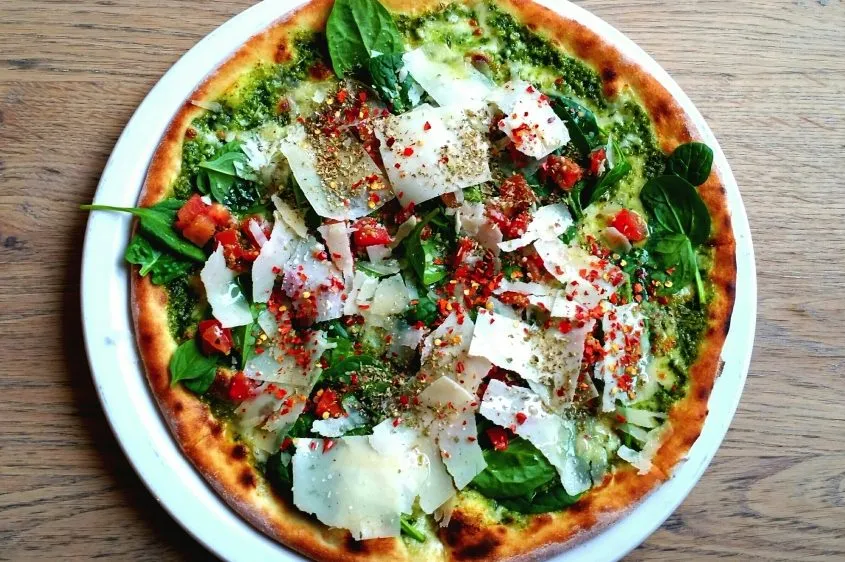
Reid also suggests that you avoid cheese-stuffed crusts and those little pots of garlic mayonnaise-based dips that sometimes accompany takeaway pizza – they're full of fat. And don’t be tempted by ‘three for two’ offers unless there really are enough people to eat them all.
Good choice: 350g (three large slices) seafood pizza (700kcal, 20g fat, 90g carbohydrate, 46g protein)
Bad choice: 350g (three large slices) meat feast pizza (850kcal, 31g fat, 85g carbohydrate, 48g protein)
Kebab
“Having a Saturday night kebab might seem like a terrible idea, evoking images of drunken 3am food-stops, but if you pick carefully it can actually be one of the most healthy options,” says Reid. She suggests picking a chicken shish kebab in a pitta bread with loads of salad.
“Don’t have any mayonnaise, though; if you want a sauce go for a mint yogurt.” Reid adds that you should always ask how the chicken is prepared to make sure it isn’t cooked in loads of oil and fat.
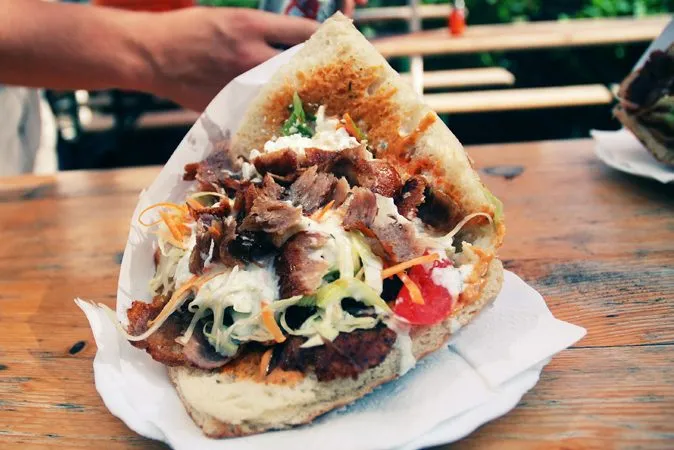
Good choice: 150g portion chicken shish kebab (232kcal, 25g carbohydrate, 4g fat, 20g protein)
Bad choice: 230g portion lamb doner kebab (586kcal, 32g carbohydrate, 37g fat, 26g protein)